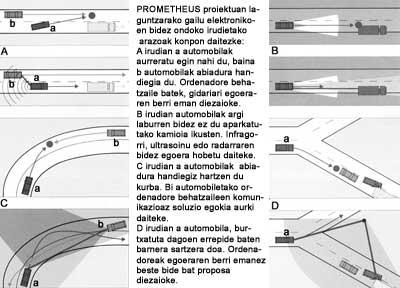Computer with guide
Driving a car is sometimes a pleasure, but it is often boring and heavy. The removal of the eyes from the road to take a look at a map can cause an accident; the car can have a strange behavior without knowing why; the car in front of us can suffer sudden changes of speed, which is not pleasant; we can find road works and therefore obstructions; at the end of the trip we can park. Therefore, at the end of the day we can find ourselves in a bad mood and tired.
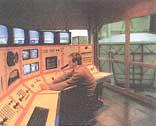
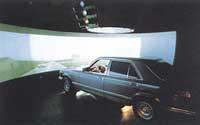
Location of road works, parking or damage hazard through a computer located in the car, etc. If we could know, driving would be much more attractive.
In 1985 the first trial of the aforementioned line was carried out, when Volkswagen started a car automatically driven on a highway at 120 km/h.
The following year and within the EUREKA project the PROMETHEUS programme was approved. This program brought together thirteen European manufacturers to adapt the current microelectronic systems to the needs of the car driver. Car manufacturers, along with traffic engineers, equipment manufacturers and research centers, want to develop the systems, software and hardware needed to make the electronic pilot a reality.
In 1986 the year 100 was fulfilled since the invention of the car. That year there were 400 million cars on Earth. In the USA there are two cars per family and one in Europe. Forecasts suggest that Europe will double the number of vehicles by the end of the century. This is a growth based on existing roads and with the lowest possible environmental impact.
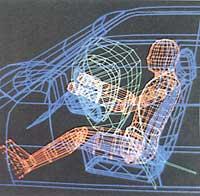
Although safety has improved greatly in the 1970-85 season, the absolute numbers are very crude, with a number of accidents of 7 million, a million injured and 40,000 dead. Also from the point of view of consumption. Although in Europe the number of cars has doubled in the last decade, consumption has barely increased by 50%. The energy crisis in 1974 led to a deep development of automotive technology. Electronics played an important role in the development of this technology, especially in reducing consumption and improving safety.
The driving simulator presented in 1984 in Berlin for the service of car manufacturers was one of the most outstanding examples of electronics. This simulator is much more complex than that of flight, since the traffic on land or in air is very different.
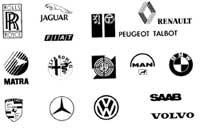
The simulator represents the state and analyzes the answers from the driver's point of view. However, the car of the future will look out, that is, explore real scenarios and make the role of the driver more comfortable. Both the simulator and the car of the future have a great technical similarity. Therefore, dynamic vehicle models, false road images and traffic models will be of great importance to the driver's computer.
Those who plan long-term engineering projects should keep in mind that computers are becoming cheaper and more powerful. Computer performance doubles within two to four years per unit of cost.
Microelectronics is dominated by the US and Japan, but Europe has reached a market share. The largest market share of Europeans has been developed so far in integrated circuits, but digital systems have an increasingly wider market. The field of electronic interface, solid state sensors, analog/digital and digital/analog converters, drivers and high-power actuators is well studied in European research centers.

There is an international consensus for microelectronics to have remarkable advances in the decade in which we are. The memory capacity and complexity logic of the chip will multiply by a hundred and although currently a chip has only four processors, they will shortly have 10,000 processors. Moving these advances to the automotive field, it is expected that next year, doubling the number of chips, the processing capacity is twenty-five times greater.
Electronics currently accounts for approximately 12% of the cost of the car. In the next 10 or 15 years this figure will reach 25%.
As mentioned above, car manufacturers joined the PROMETHEUS program for technological development in the automotive field. It brought together manufacturers and researchers from France, Germany, Italy, Sweden and the UK. In 1986 the definition phase began and in 1987 the participation of the electronic industry in the project began. At that time, expenditure amounted to 30,000 million pesetas (1.5 billion pounds) and a total of 200 billion pesetas (10 billion pounds) were budgeted.

Today almost a thousand engineers work on the seven subprojects that prometheus has. Four of them belong to basic research: artificial intelligence (PRO-ART), specialized chips (PRO-TXIP), communication methods and standards (PRO-COM) and evaluation of systems in traffic scenarios (PRO-GEN). The other three projects are industrial research. On the one hand, we analyze in PRO-CAR the help that electronics can offer to the driver; on the other hand, we analyze the relations of the vehicle to the vehicle and the communications with the environment; and finally, we explore the interaction between the vehicle and the road in PRO-ROAD.
The safety of prometheus is one of the most important objectives of electronics. 90% of the accidents that occur today are due to human error. The human brain has more study, processing and memo capacity than any computer, but it is slow. Since the man perceives something until he decides, it takes 2 seconds, that is, 50 meters in a car. With the help of computer science, human reaction time in test vehicles is between 10 and 1,000 times lower. It is estimated that if the man's reaction time was shortened by a second, 80% of accidents would be avoided.
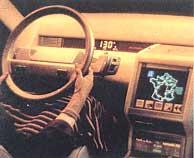
prometheus aims to overcome the lack of communication between vehicles. The installation of computers in vehicles will allow anticipating many situations not observed by the driver, minimizing the risk of accidents.
The establishment of automated systems on roads, in addition to vehicles, allows the driver to know permanently the location of the car park, hotel, gas station or the most suitable means to achieve the goal. For this information network to be effective it is necessary to extend it internationally, otherwise the car can become a fool when crossing the border.
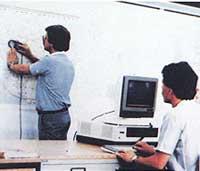
The computers used in prometheus are capable of handling 25 million orders per second. This means that you need a large current computer, but thanks to the evolution of computers, what today is great tomorrow will be normal. The hardware must be accompanied by software, and especially applications based on artificial intelligence.
The automotive revolution comes from the new technology, and as seen in this article, the industry of the Basque Country does not seem to help at all, either in this turn or in steel. Let the future escape?
